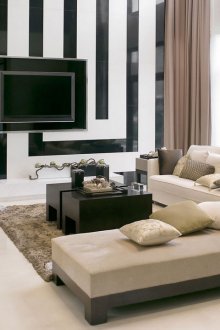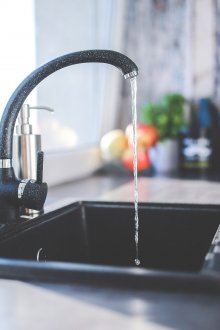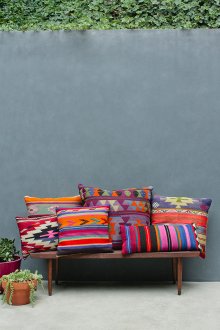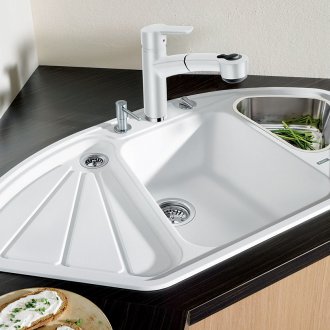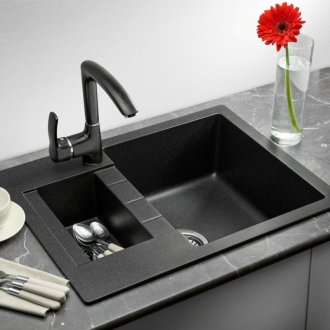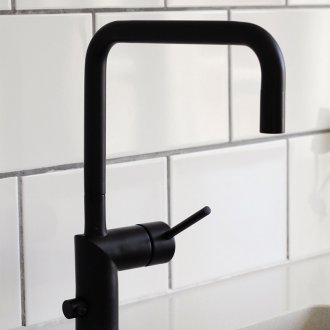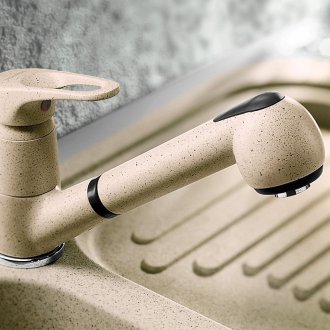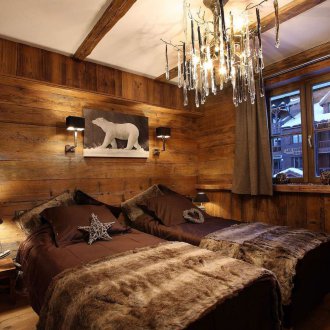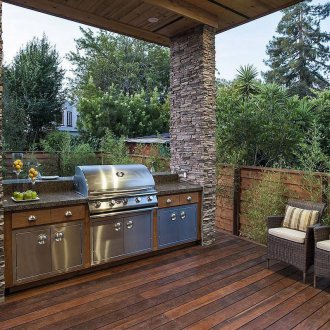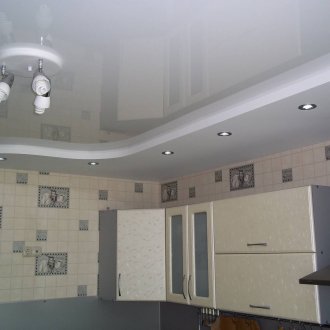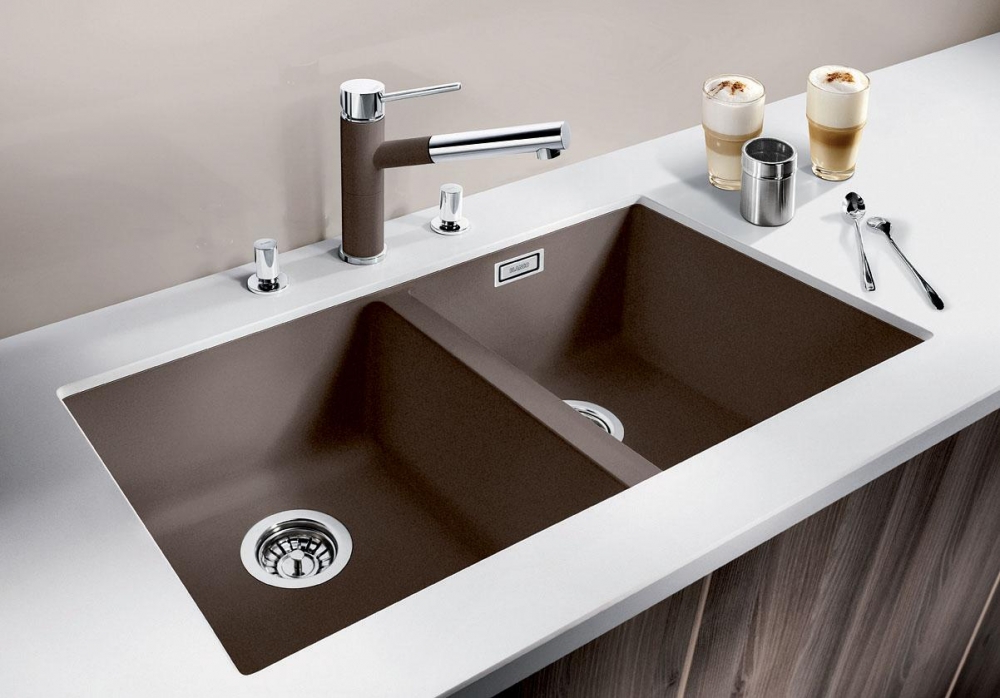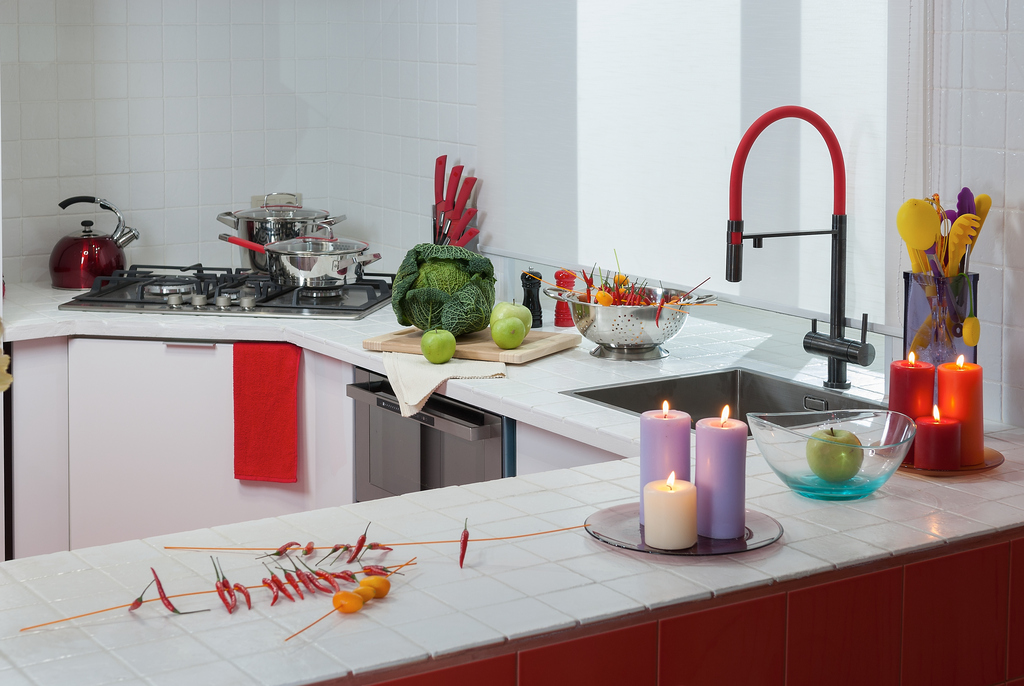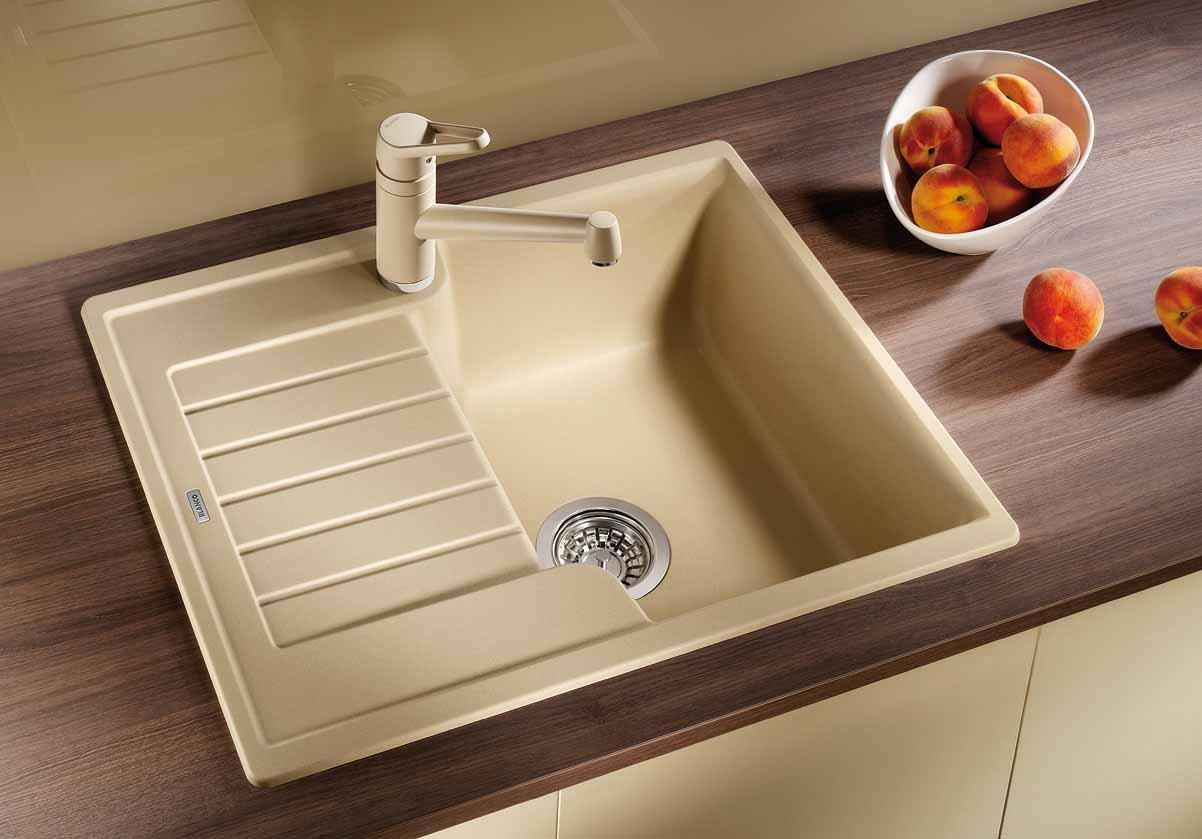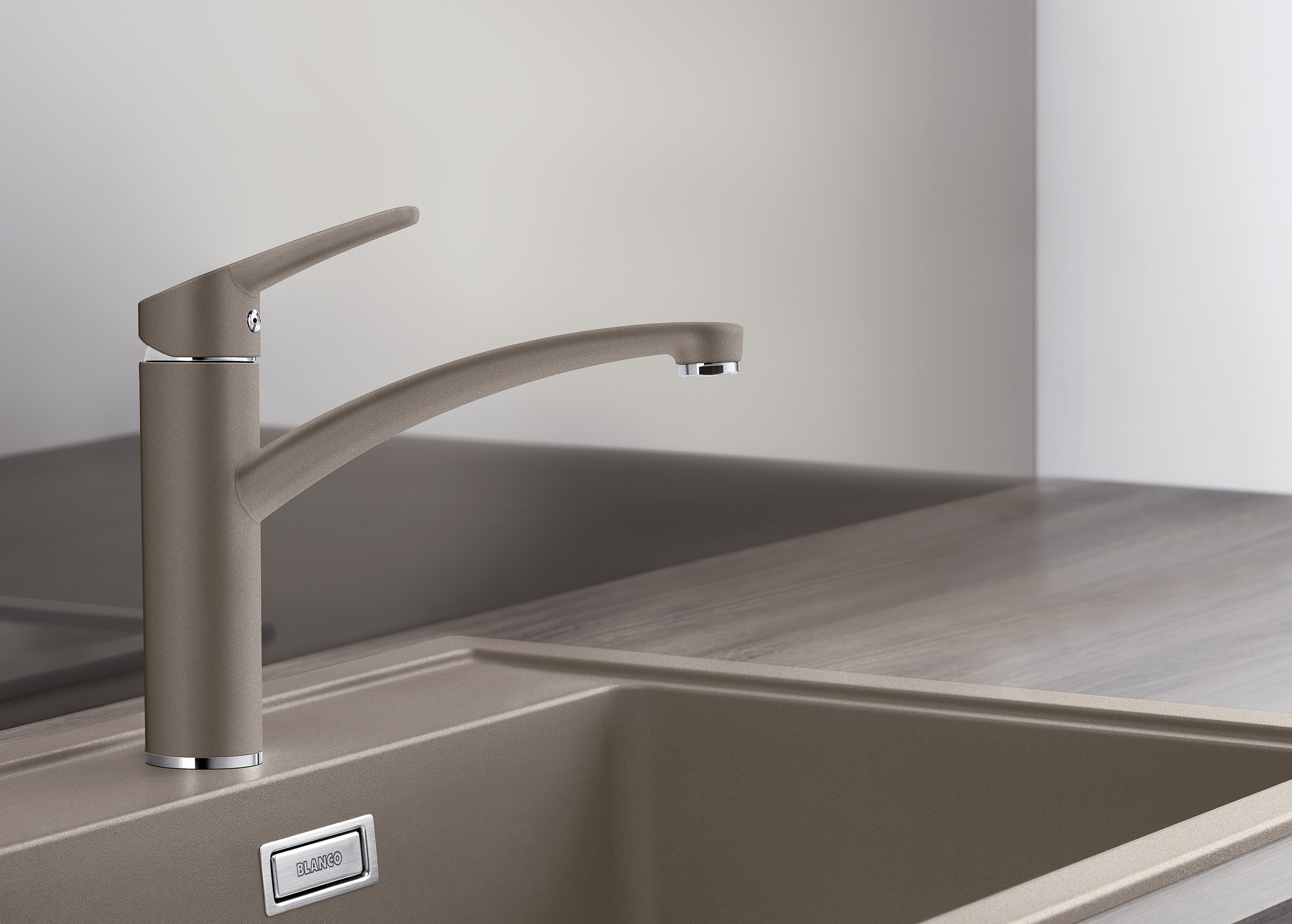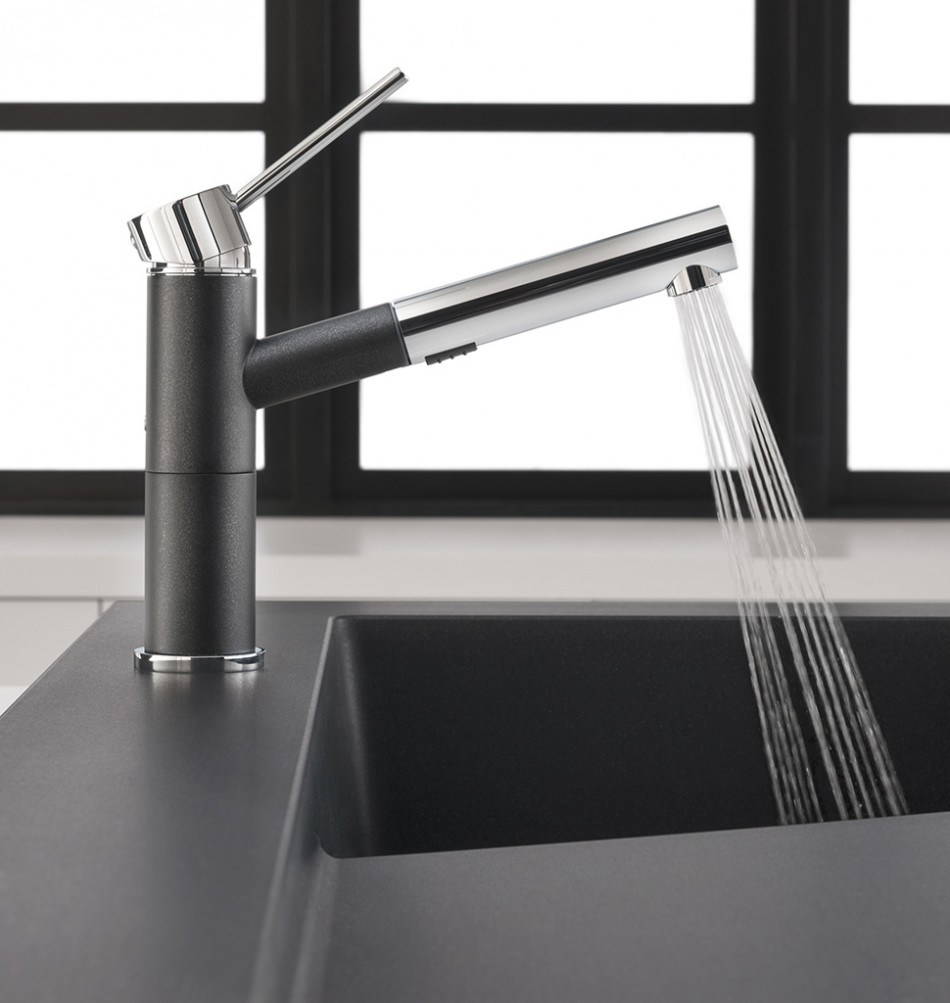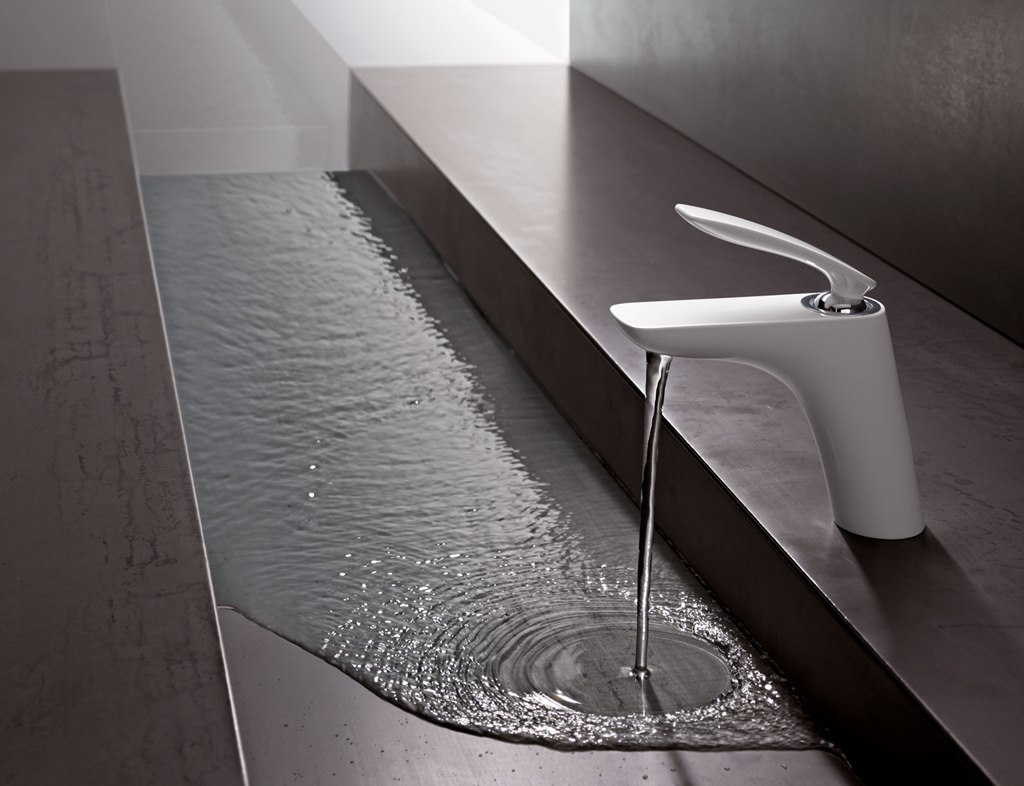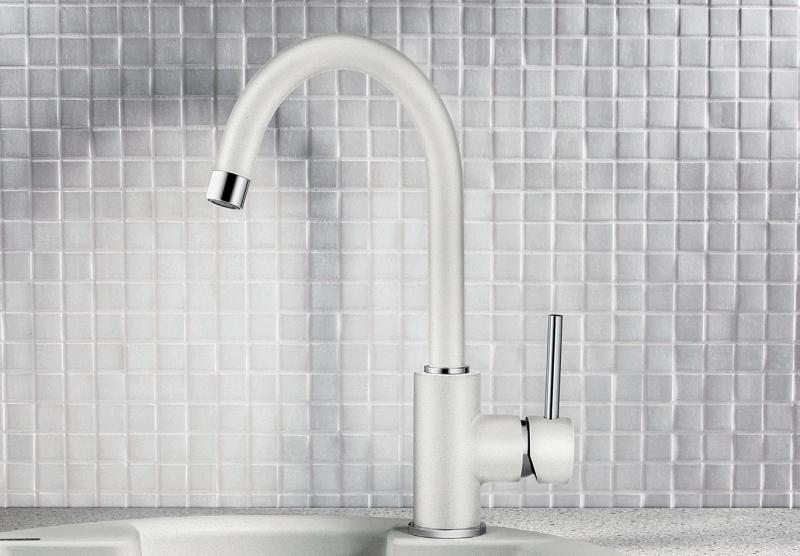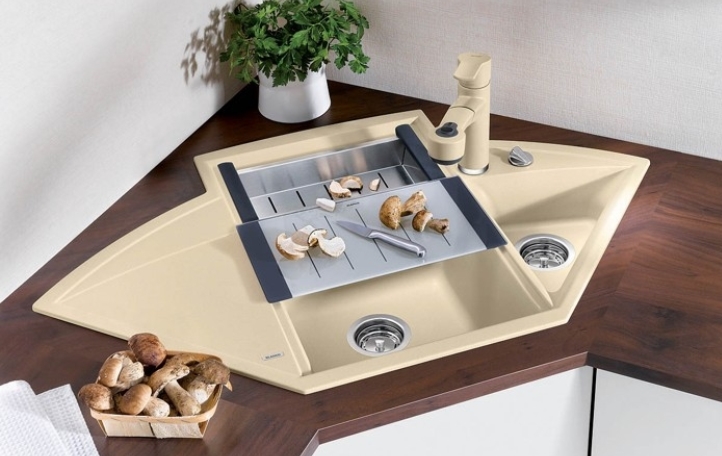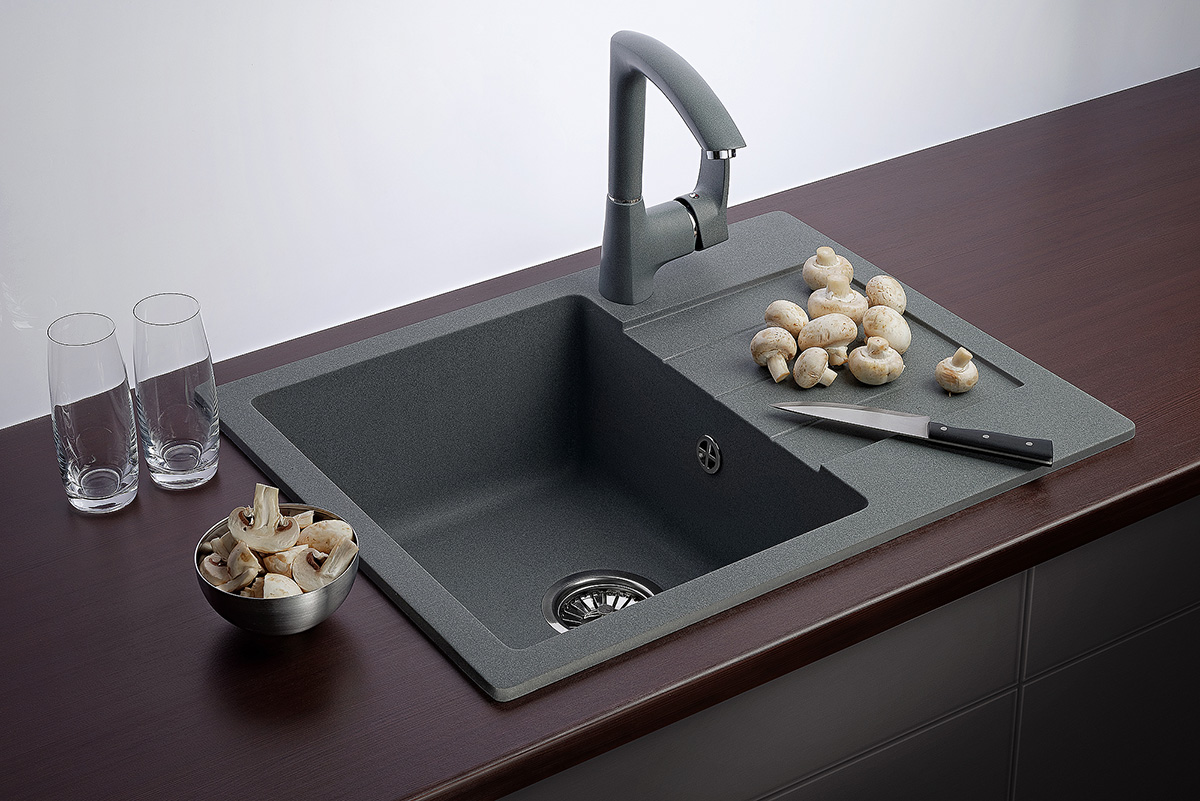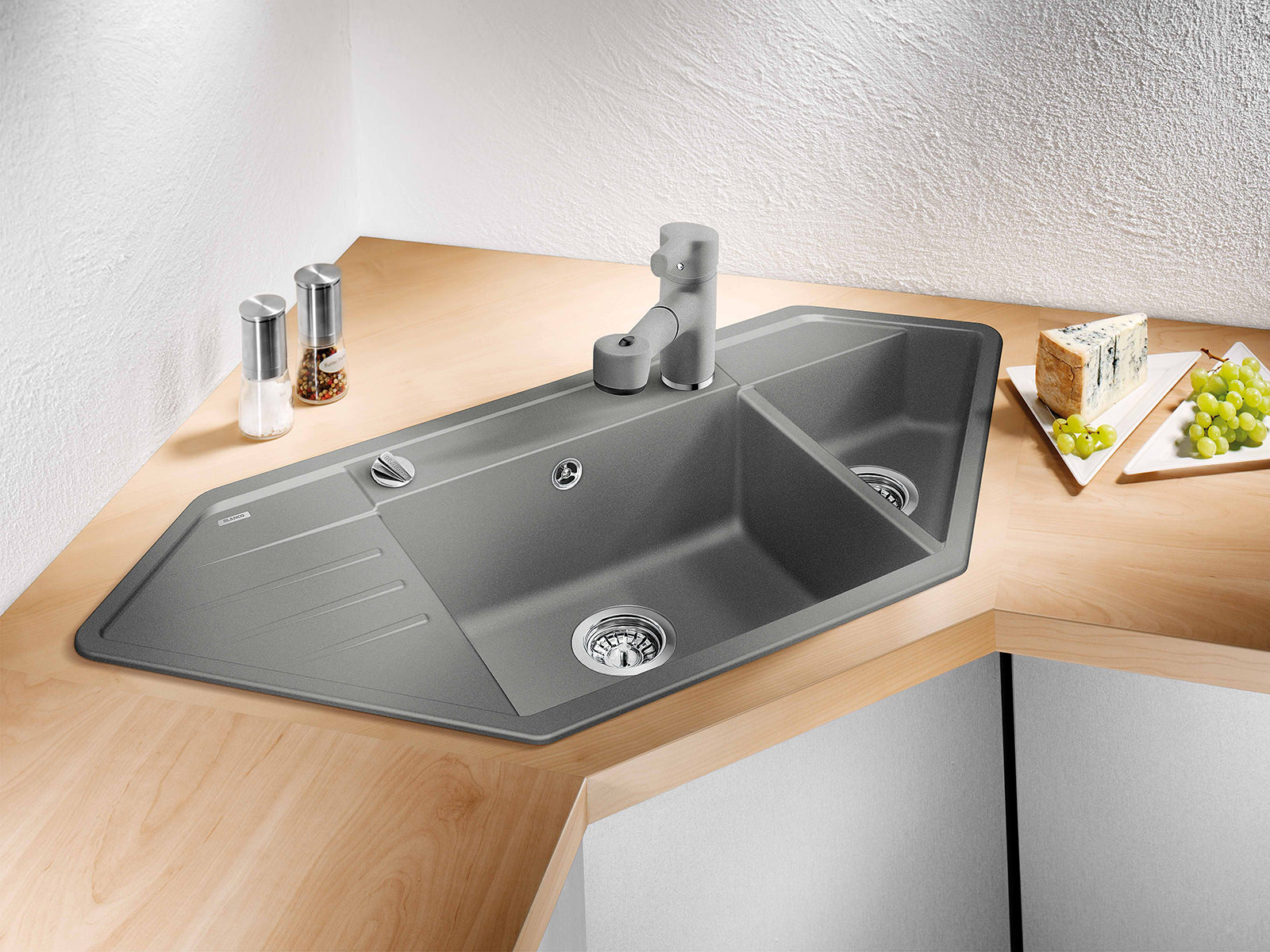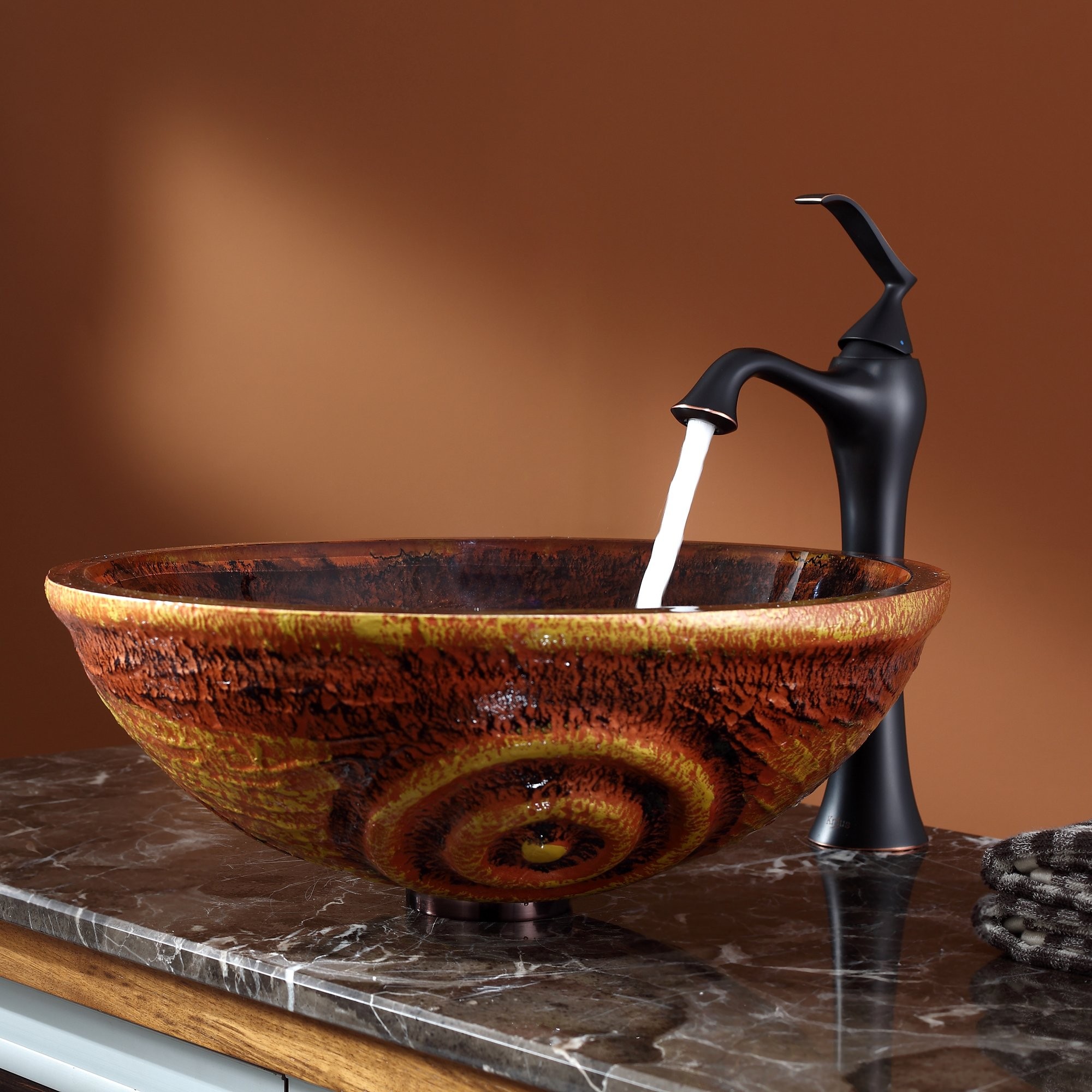Stone faucet: unusual solutions in the interior (23 photos)
Content
The strength and reliability of the design, convenient operation and aesthetic appearance are the main qualities that sanitary devices in the kitchen should have. The stone kitchen faucet fully complies with all these requirements.
The artificial stone that is used to make such mixers is an innovative development that harmoniously combines practicality and quality. The main component of the composition is natural granite (in the form of grains). As additives, polyurethane resin or an acrylic binder, a coloring component are used.
Manufacturers spend significant funds on improving the formulation and improving the properties and characteristics of products. The optimal ratio of components is 80 to 20 (granite / additives, respectively). All materials are mixed on special equipment under high pressure. Special technologies do not allow voids to form in the mixture and guarantee the uniformity of its structure. Coloring pigments are added at the kneading stage, which ensures uniform coloring of the material.
The body of the mixer, as a rule, is made of brass, and the coating can be solid or combined (artificial stone, chrome, brass). The use of ideal proportions, environmentally friendly materials increase the operational characteristics of plumbing made of artificial stone.
Product Benefits
The main advantages:
- wear resistance is an important quality, since a kitchen faucet is used constantly;
- easy maintenance with detergents (not containing abrasive additives);
- hygiene;
- special external treatment creates an antibacterial effect and prevents cracking of the surface;
- resistance to high temperatures and temperature extremes;
- do not fade (retain color even when exposed to direct sunlight);
- do not stain when in contact with food coloring;
- stain resistance;
- a diverse color palette does not contain bright colors, but allows devices made of stone in harmony with many popular interior styles.
Mixer Designs
One of the important principles when choosing a kitchen appliance is ease of operation. Literally, "with one finger." Artificial stone structures are equipped with different control systems. The classic version is a two-valve mixer, which provides a separate supply of cold and hot water. The power of the water stream and the temperature are precisely controlled by the scrolling valves, which is an indisputable advantage.
The more common and popular models are single-lever. They are also called "joystick" or "ball". The principle of the device is quite simple: the movements of two spherical surfaces control the power of the water flow and regulate the temperature of the jet. Tight alignment does not require an additional seal.
The main advantages of different types
Stone faucet is a new unusual attribute of the kitchen. When choosing a model, several important design features must be taken into account.
Spout - part of the device through which water from the mixer is fed into the sink. Its height is determined by the distance from the base of the plumbing to the nozzle (ranges from 15-25 cm).The product for this indicator is selected individually by each hostess. But it should be borne in mind that low spills make it difficult to wash overall dishes, and at high spills water is very sprayed.
When searching for the optimal solution, the depth of the sink and its shape must be taken into account (some models may have several compartments). The spout length is measured as the horizontal distance between the most distant points of the structure.
Spouts come in several forms:
- L-shaped is characterized by a height of 11-24, a length of 19-22 cm;
- the diagonal one is 12-20 cm high, 18-22 cm long;
- arcuate is characterized by a height of 22-25 cm, a length of 20-22 cm.
Spouts are available with a retractable watering can and stationary (turning 120-360 °). The watering can is equipped with a flexible hose up to 140 cm long. A special spring easily pulls the hose into its normal position. A similar device can be equipped with an artificial stone mixer with a spout of any shape.
When choosing a mixer adhere to the following rules:
- water should not fall on the walls of the sink, but on the bottom or drain valve. Therefore, short spouts do not put on wide sinks, and long ones are not suitable for narrow sinks;
- water from the nozzle does not exit at right angles (exception - L-shaped forms of spouts). Models with a high raised nose differ in a significant angle of incidence of water and are not suitable for sinks narrow or small.
Installation Nuances
When installing a kitchen faucet made of artificial stone, two installation options are used.
To the surface of the sink
Some manufacturers produce sinks without special holes. A plus of this option is the ability to independently choose the installation location of the mixer. Installation work is carried out until the sink is installed. In order not to damage the product, it is recommended to use the services of qualified specialists. For work you will need a crown milling cutter with diamond spraying.
If the manufacturer left special plugs on the sink, then you can make a hole on your own and install the mixer. The cork is knocked out with a hammer, and it is important to strike in the center of the mark. To facilitate the process, you can use a chisel. Roughnesses along the edges are then cleaned with a rasp.
It is recommended to mount the mixer in the countertop only in exceptional cases. Even the use of moisture-resistant materials will not protect the surface for a long time from water.
Design and shape of mixers
The elegance and style of plumbing for the kitchen has always been important in creating the interior. Conventionally, stone faucets can be made out in different stylistic directions:
- classic, retro - installation of two-valve L-shaped models will add sophistication to the kitchen or help recreate the cosiness of past years. Primary colors: white, brown, beige;
- hi-tech - the use of diagonal mixers in combination with rectangular sinks will emphasize the geometric shapes of the environment. Combined models combining artificial stone and chrome will add a play of textures to the neutrality of the interior. The main color palette: white, black, gray;
- modern - installation of arched devices complete with round sinks (if rectangular or square, then with rounded corners) will perfectly complement the smooth lines of the interior. It is desirable to select models of white color or smoky-blurry shades (grayish, beige, light brown). If the whole kitchen is designed in pastel colors, then you can install faucets in bright colors: green, red, blue.
Mixer Tips
Install a model proportionally suited to the sink. This will help to avoid splashing water on the countertop and make washing dishes, products comfortable and convenient.
First, decide on the purpose of the sink: only for washing dishes, fruits, vegetables, or is it planned to service bulky pots, large containers? Also be sure to take into account the parameters of the furniture and its location.
Palettes from different manufacturers may vary. Common colors are gray, black, light green, white, beige, blue, pink, green. The name of the shade is best known from the product passport.
The most reliable method of buying a kitchen faucet is complete with a sink.In this case, not only the uniform style of the details will be preserved, but also there will be no differences in technical indicators. As a rule, the instructions for the products indicate the option of optimal installation for quality work.
Plumbing made of natural stone is a standard of quality and durability, but high prices significantly limit its demand. Stone mixers are worthy analogues of models made of natural granite or marble. Today, many manufacturers of sanitary ware offer a variety of budget models under the stone for the equipment of kitchens with guarantees of reliability and safety of all operational qualities. Coping with the problem of choosing the right option will help consultants in stores.
